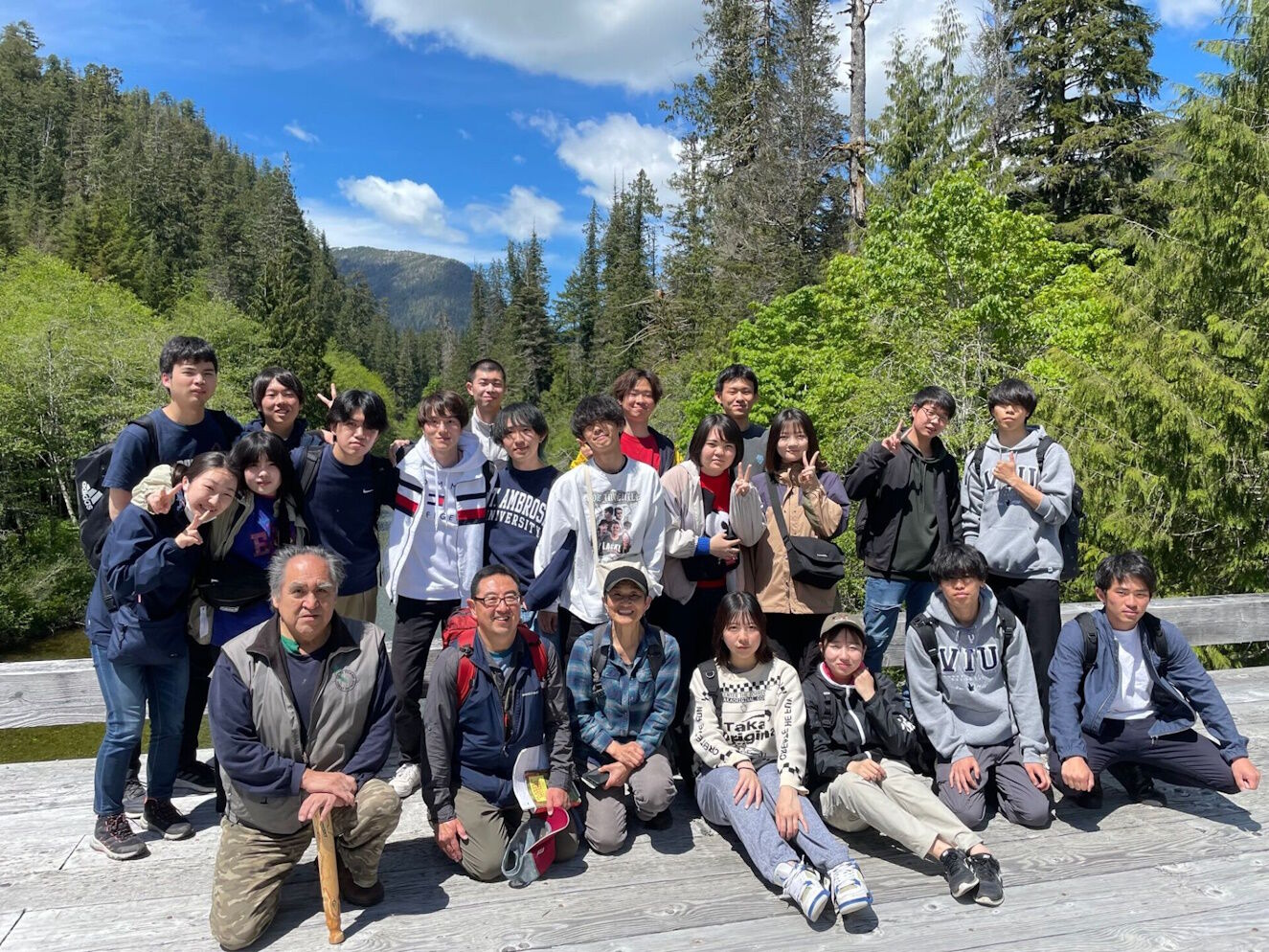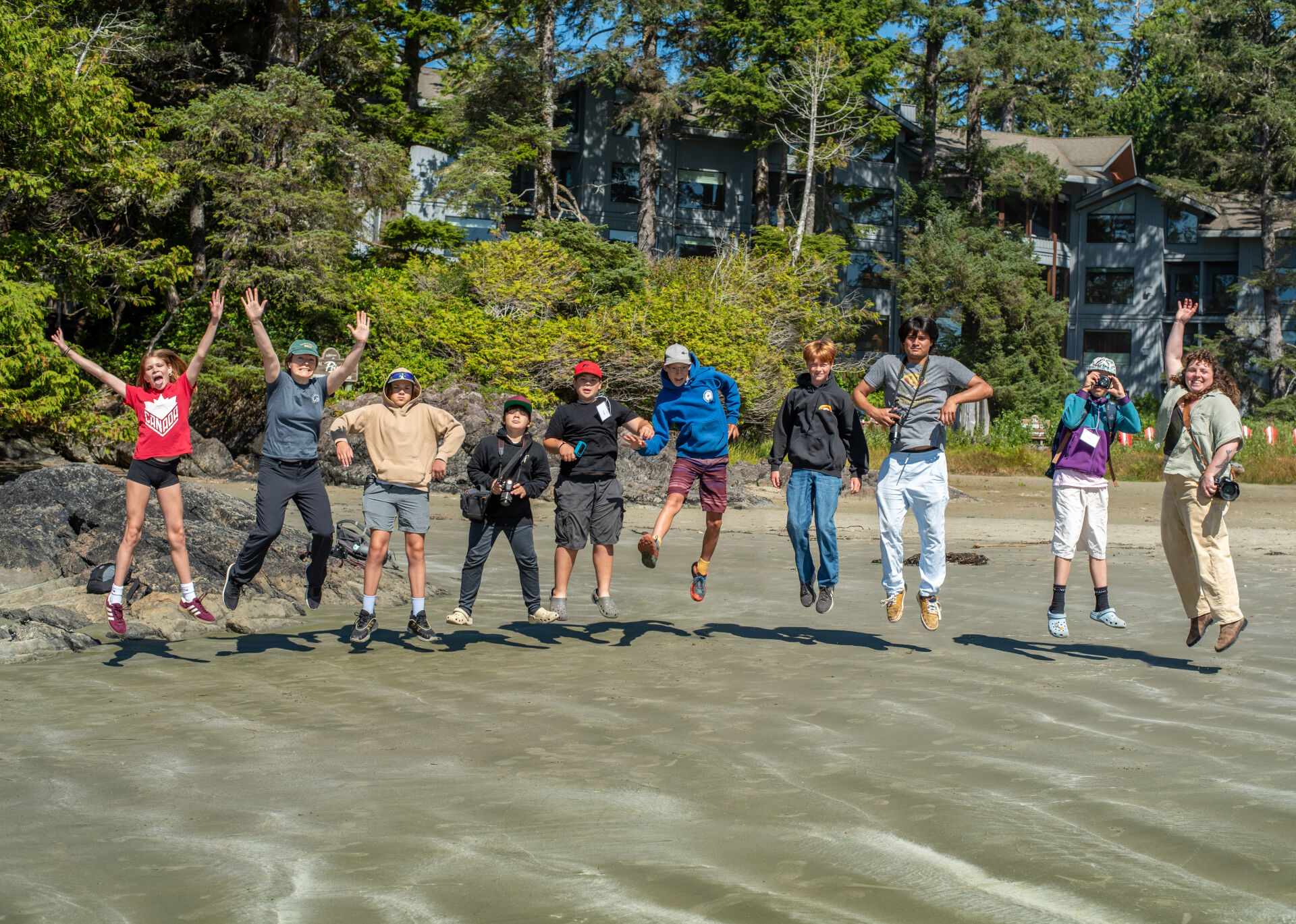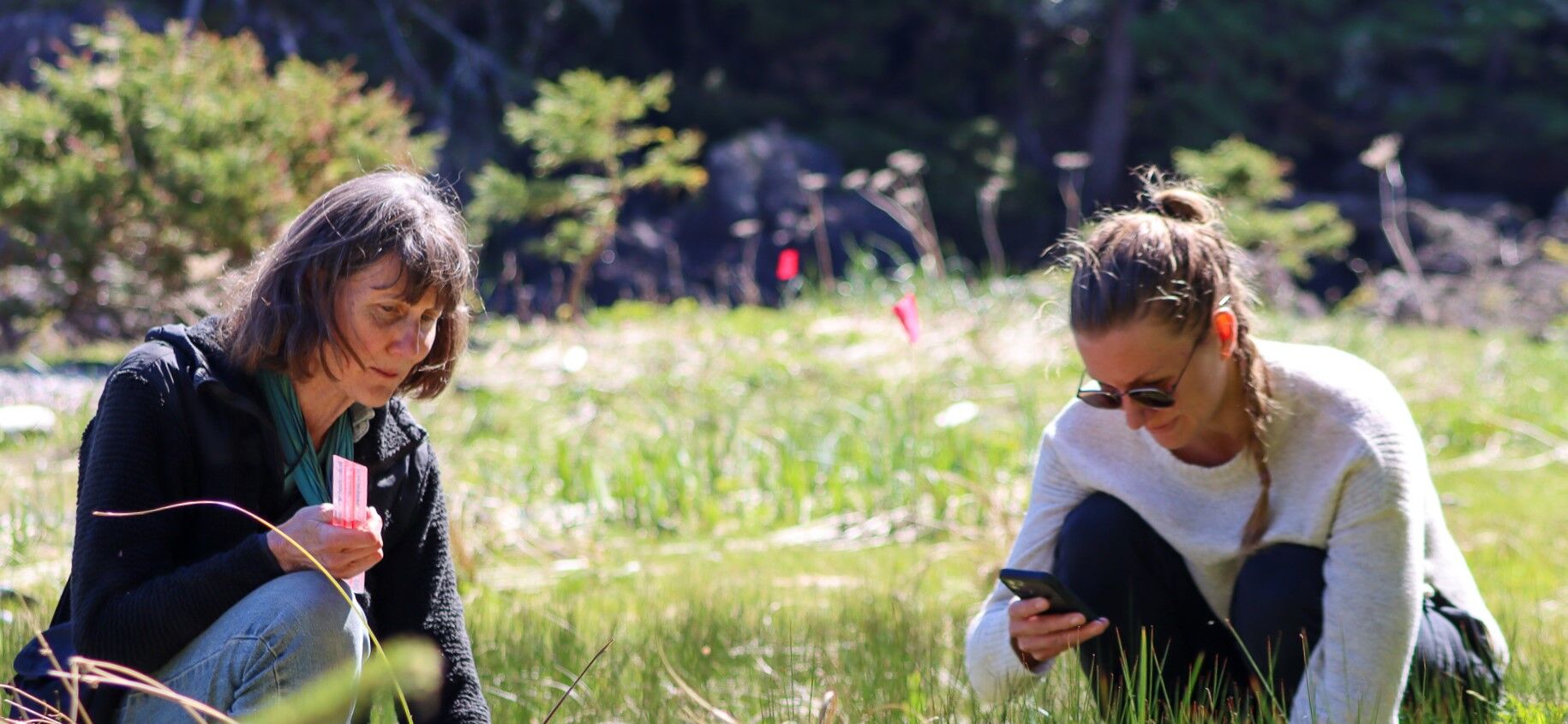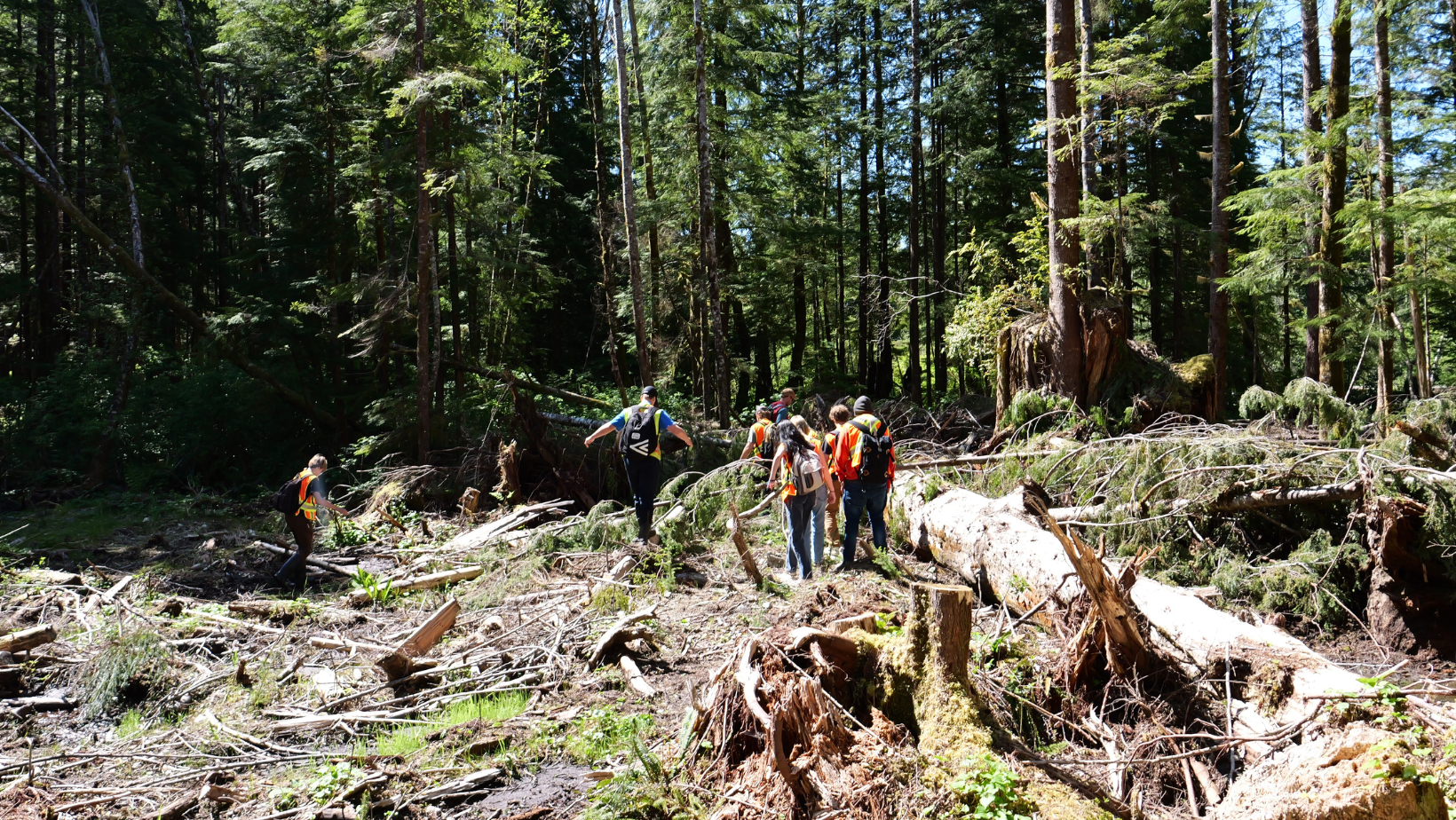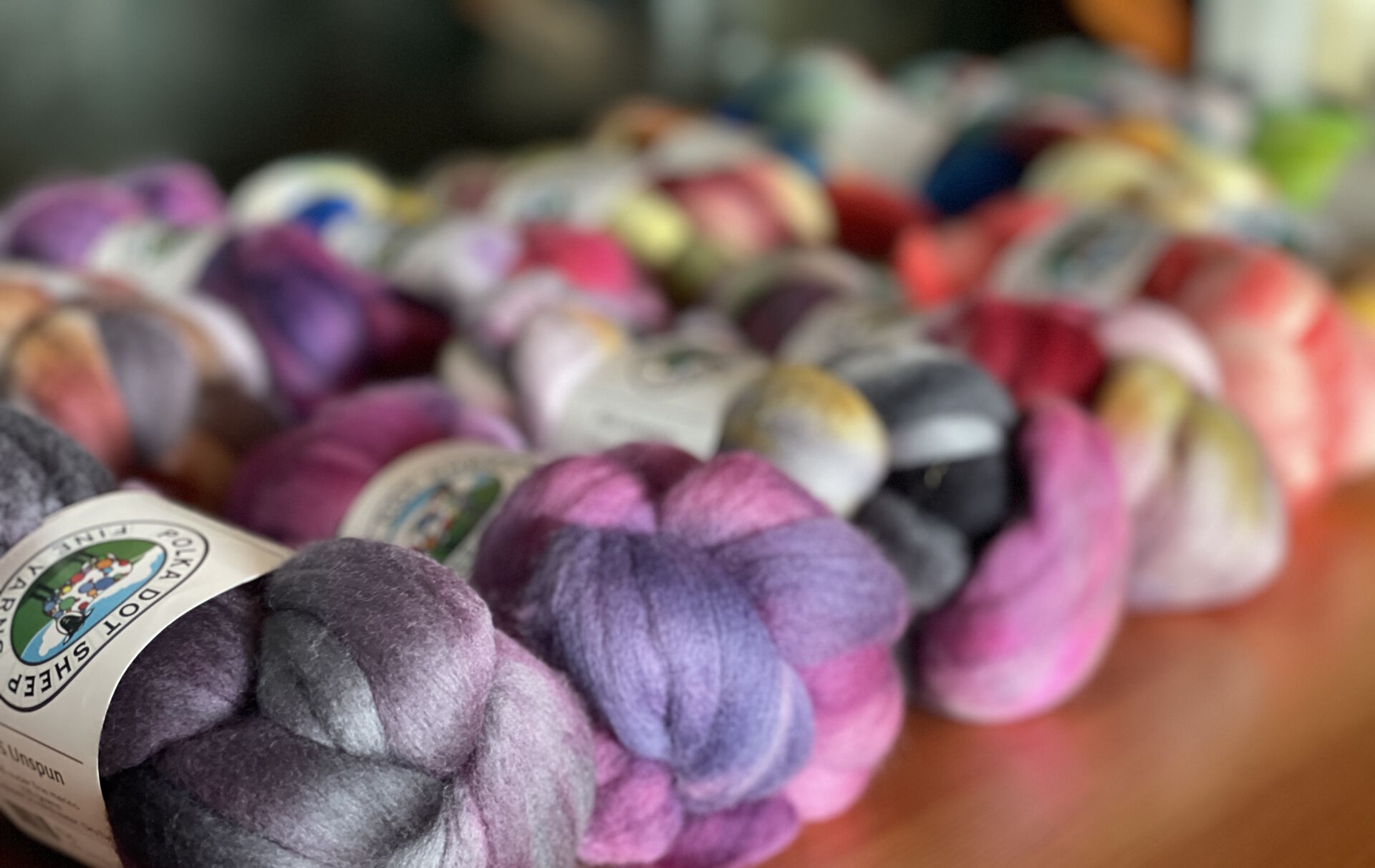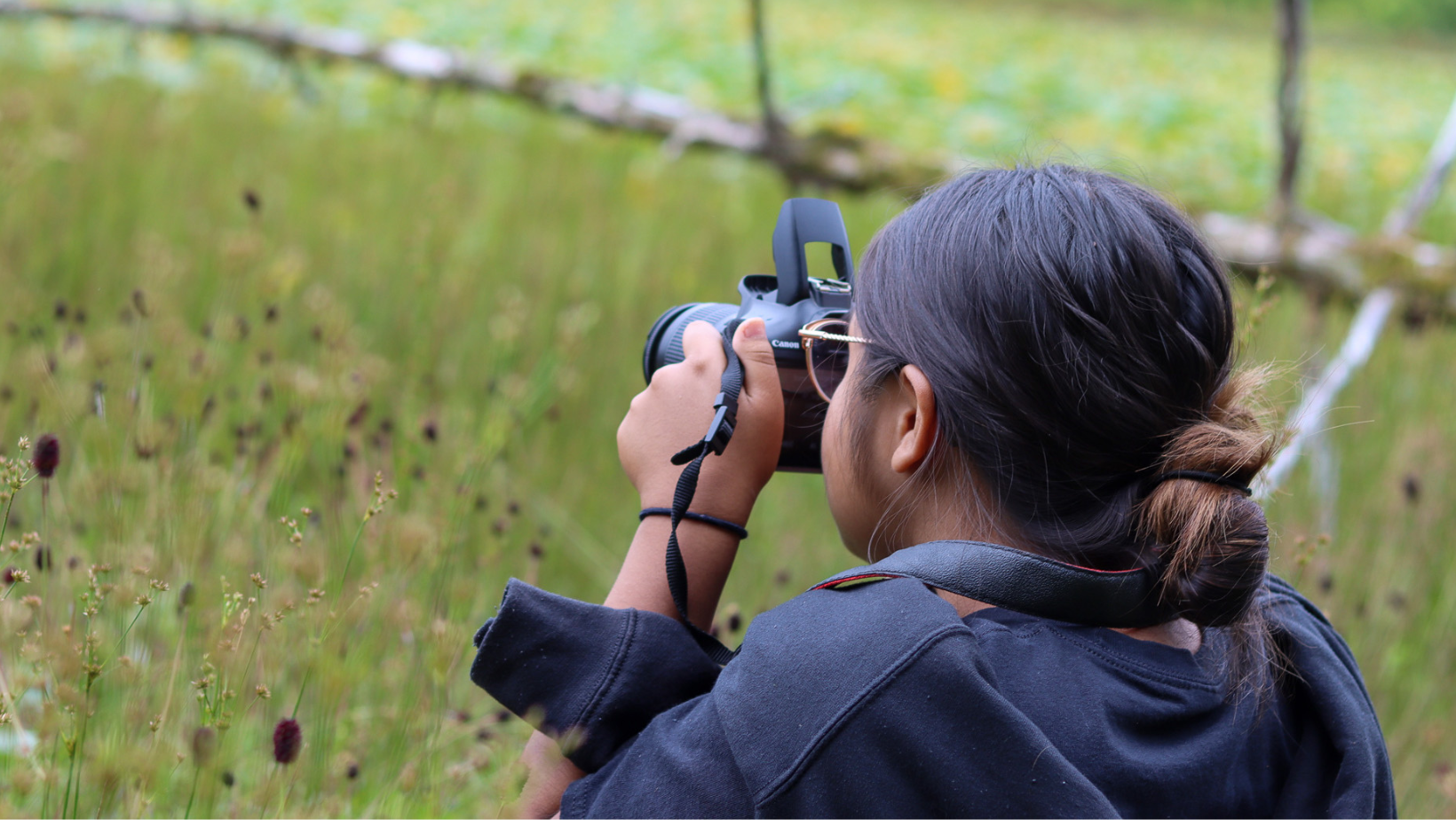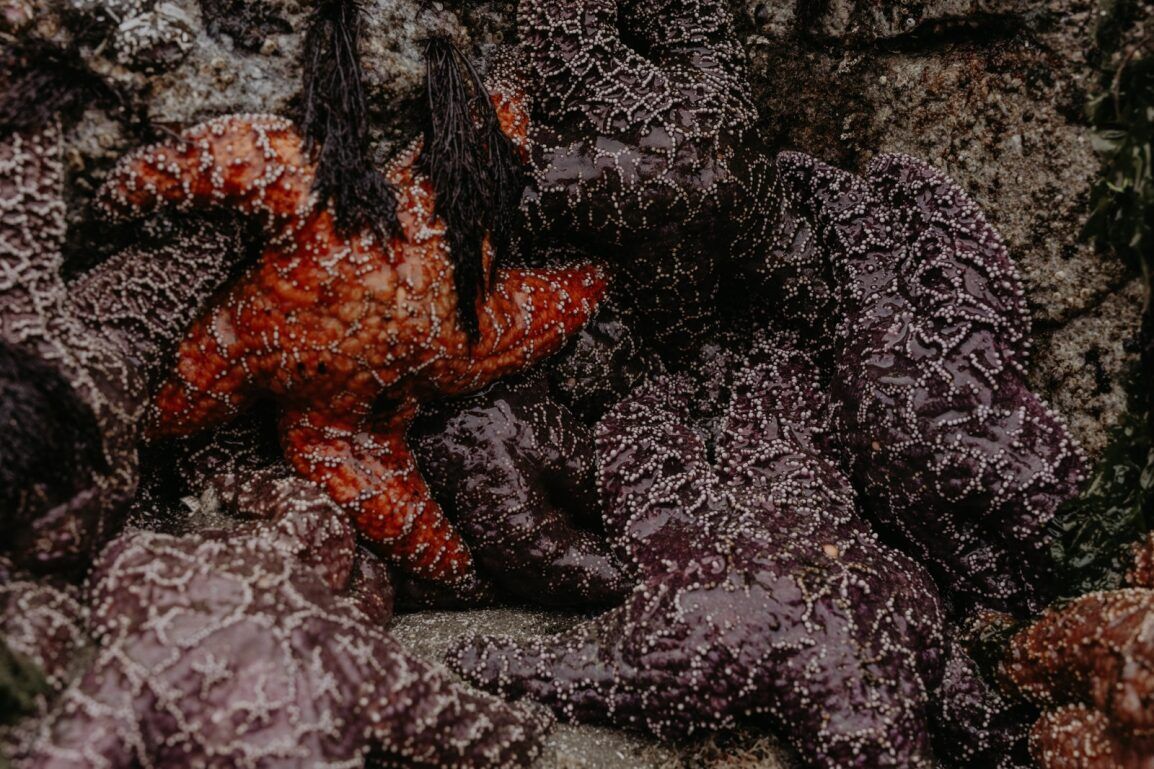Place-Based Learning with Tamagawa University
After a few years without in-person educational programming, West Coast NEST was so excited to welcome groups of students from Japan’s Tamagawa University for a personalized education program this month. The agriculture students are currently studying abroad, spending the semester at Vancouver Island University in partnership with Tamagawa’s satellite campus in Nanaimo. But with the help of some organizations in the Clayoquot Sound Biosphere Region, these eager students were able expand their learning outside the traditional classroom!
After spending the morning on a bus enjoying the spectacular views along the windy road from Nanaimo, the field trip began with a NEST introduction to the region at the Tofino Community Hall. The students learned what makes up a UNESCO Biosphere and tried to guess how many there currently are in Japan (hint: it’s less than Canada's 19).
Then, each class took an interpretive hike to the beach through Tonquin Trail, guided by Maddy Bolt on one of her last days as Field School Coordinator at Raincoast Education Society. Maddy introduced the students to the many layers found within the forests and helped them identify the canopy, the understory and the forest floor.

Raincoast Education Society guides Tamagawa on an Ecology Walk through Tonquin Trail
Fortunately, the sun never stopped shining as the students learned to identify snag trees, skunk cabbage and the difference between cedar and hemlock trees. They even got to taste test their needles as a late-afternoon snack!
After an afternoon basking in the sun, Tamagawa then headed into town to the Tofino Clayoquot Heritage Museum to examine historic artifacts and read about Japan’s own history of fishing in the waters of the Pacific West Coast.
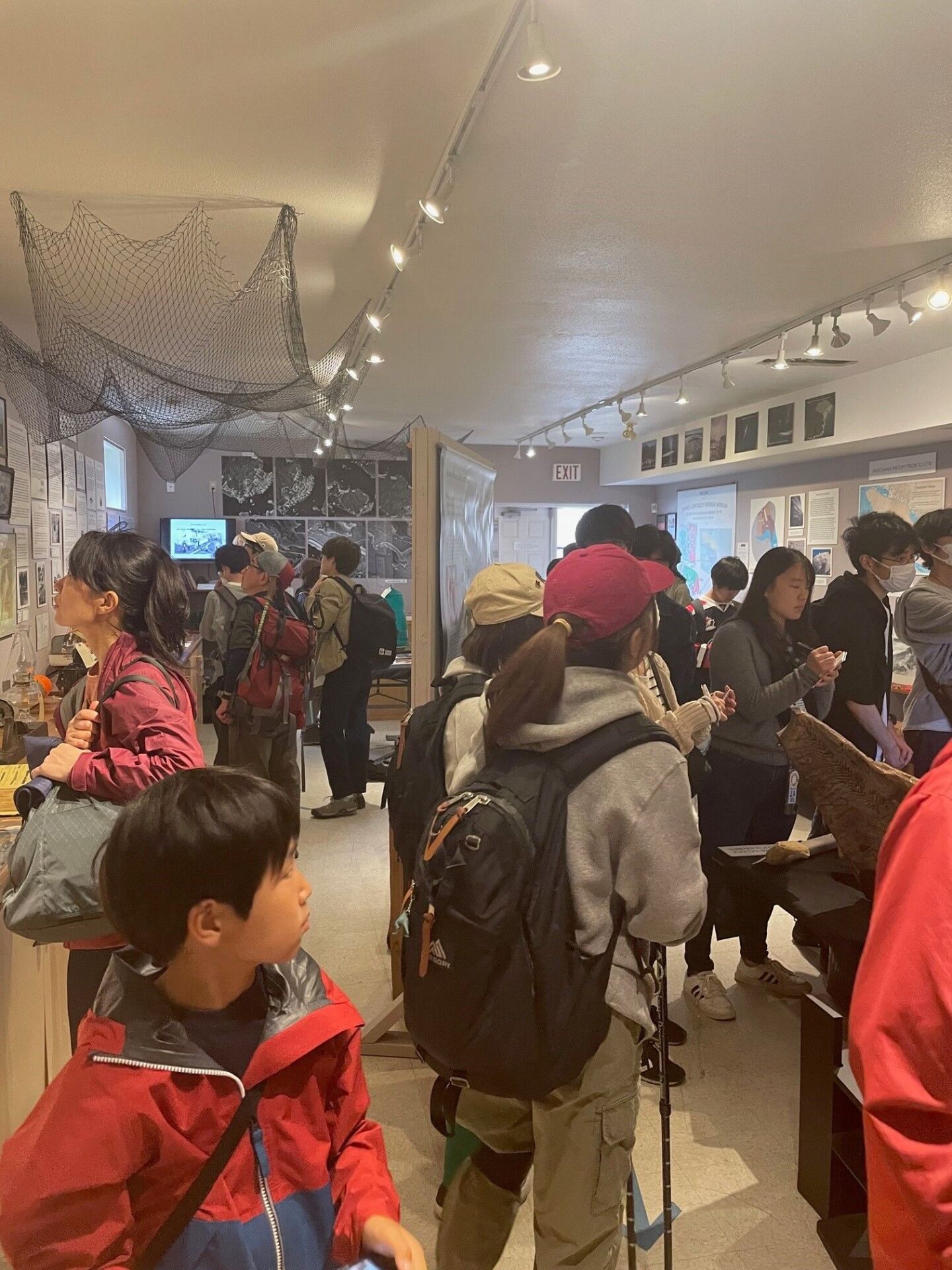
Students learn all about Tofino's history at the Tofino Clayoquot Heritage Museum
After what was surely a long, restful sleep at the Canadian Princess Lodge and Marina after an eventful first day, Tamagawa’s second day on the field trip was spent in Ucluelet studying forest structure and the region's history of forest management.
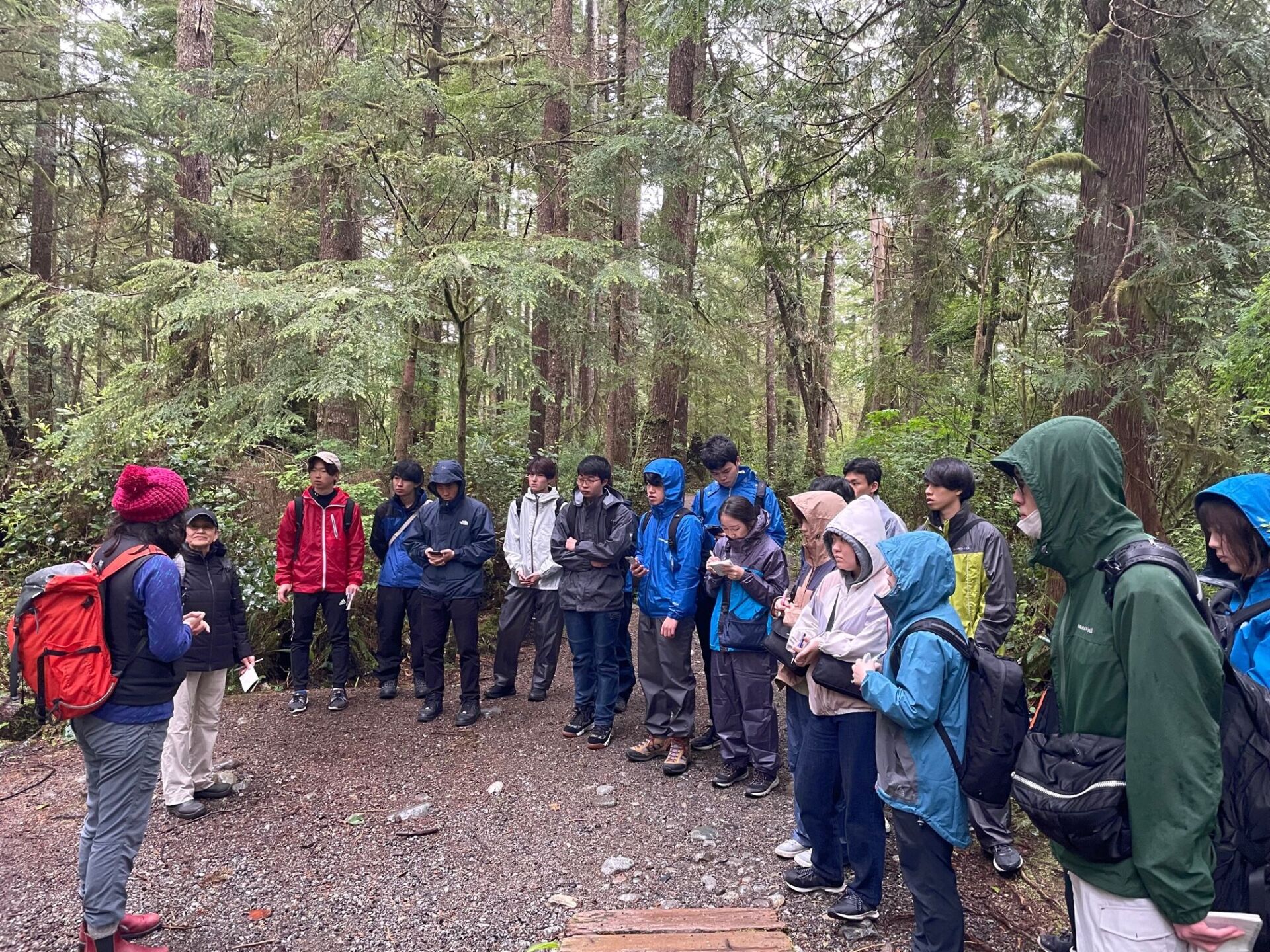
Students take note as environmental educator Ariane Batic talks about forest structure and management along the Willowbrae Trail
Joined by local environmental educator Ariane Batic, the walk along Willowbrae Trail allowed the students to explore the way logging has changed in the past hundred years and how these changes have impacted the forests and Indigenous traditions. At the beach, they explored tidepools and discovered that trees aren’t the only interesting thing living on the Island!
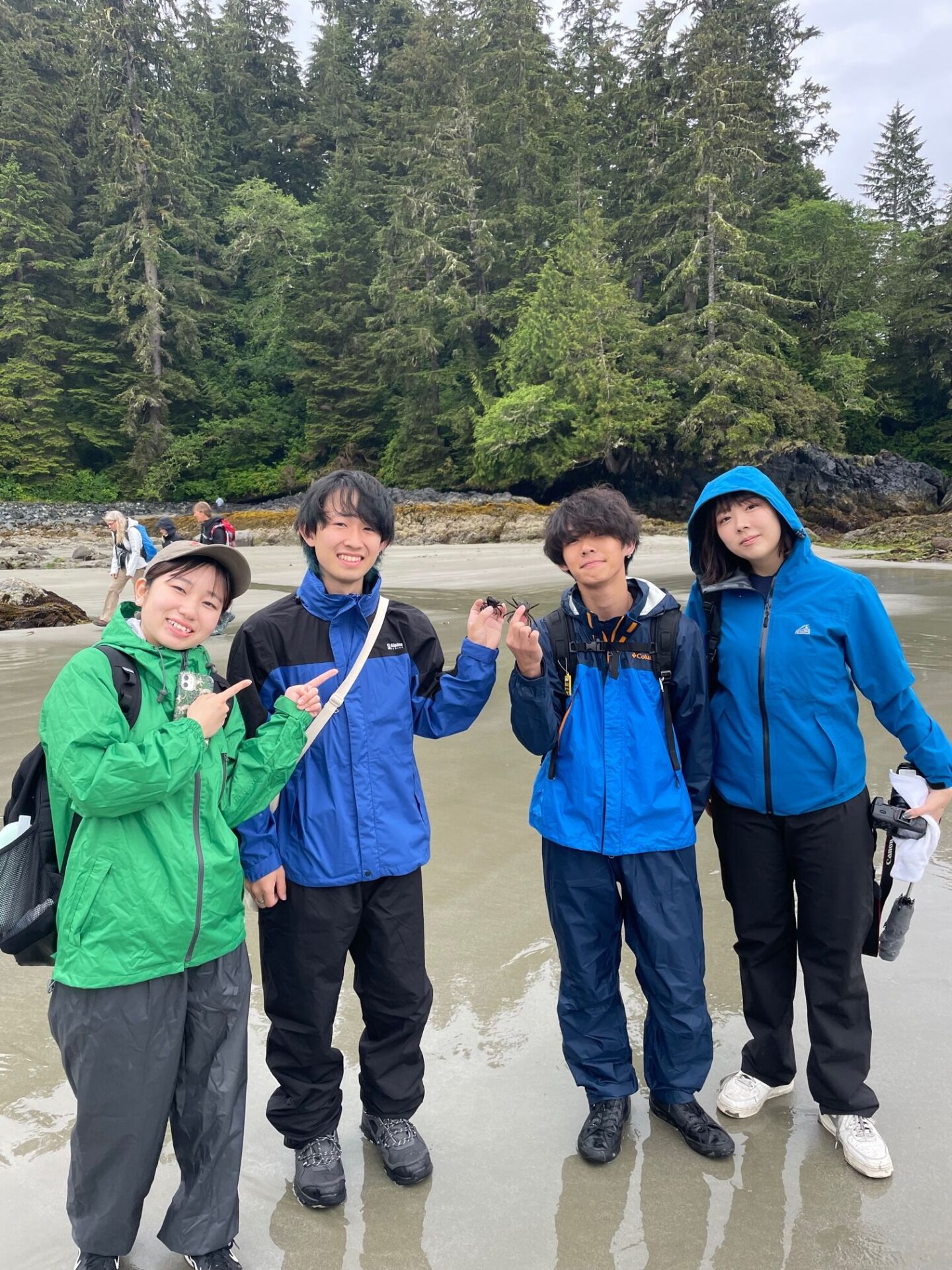
Tamagawa students enjoyed the tidepools and coastline of Tonquin Beach
Equipped with an understanding of coastal forest ecology, structure and management, Tamagawa had the opportunity to see the different forest stages for themselves through the A Walk in the Forest Trail. Joined by Frank Witter of Redd Fish Restoration Society, the students applied their knowledge from the Tonquin Trail and noticed how the understories and forest floors of Old Growth forests differs from second- and third-generation forests.
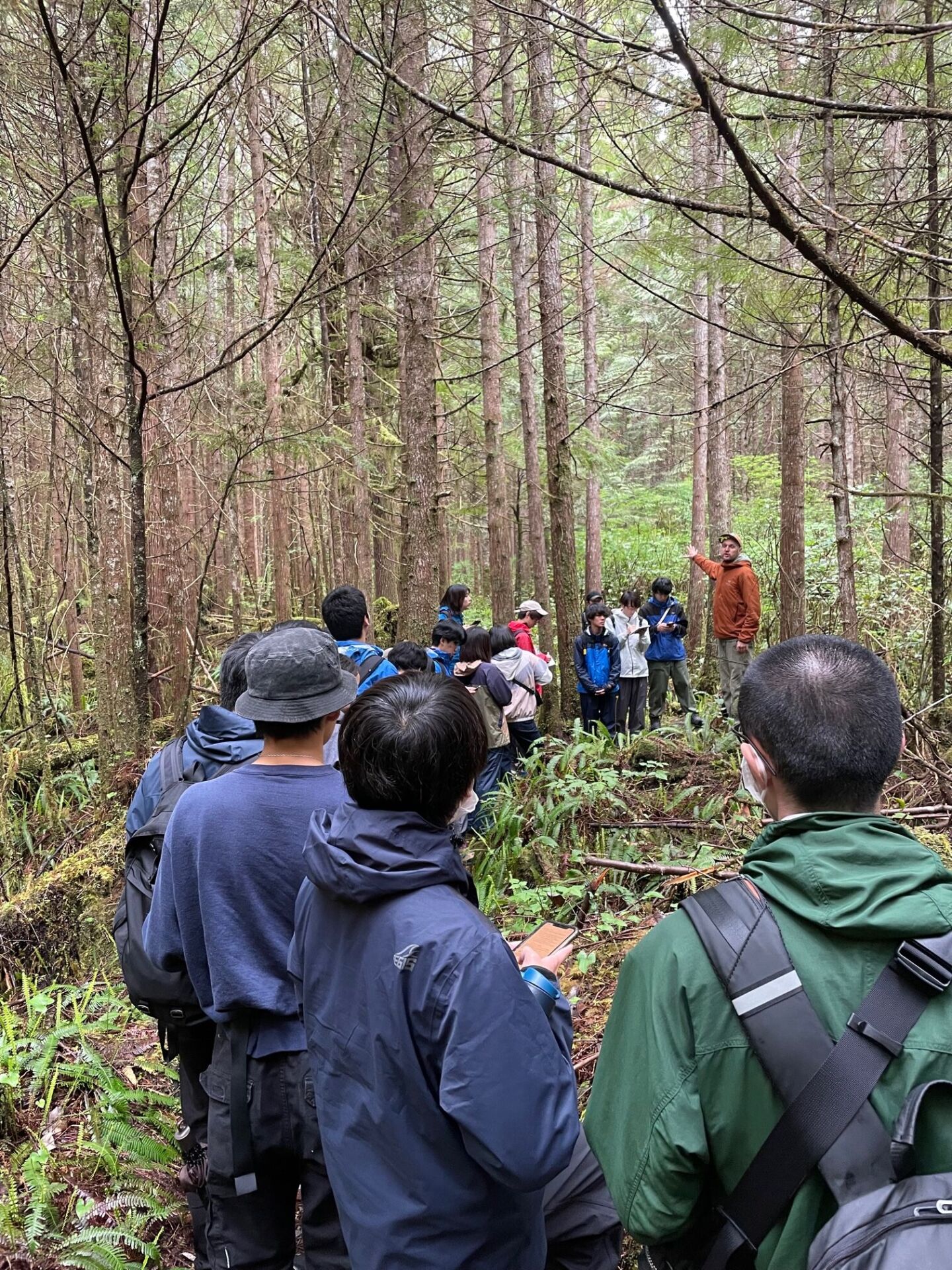
Redd Fish Restoration Society explains how vital forests are to salmon population
As the group walked to the river, Frank demonstrated how life in the forest is always connected by explaining that Redd Fish must work toward forest restoration in order to improve the west coast's salmon populations.
On the way back to Nanaimo on the final day of their trip, Tamagawa stopped at Sutton Pass, located on Tla-o-qui-aht territory, to hear from Moy Sutherland Sr. Registered Ahousaht First Nations, Moy labels himself a “bridge” that connects his culture to those outside it.
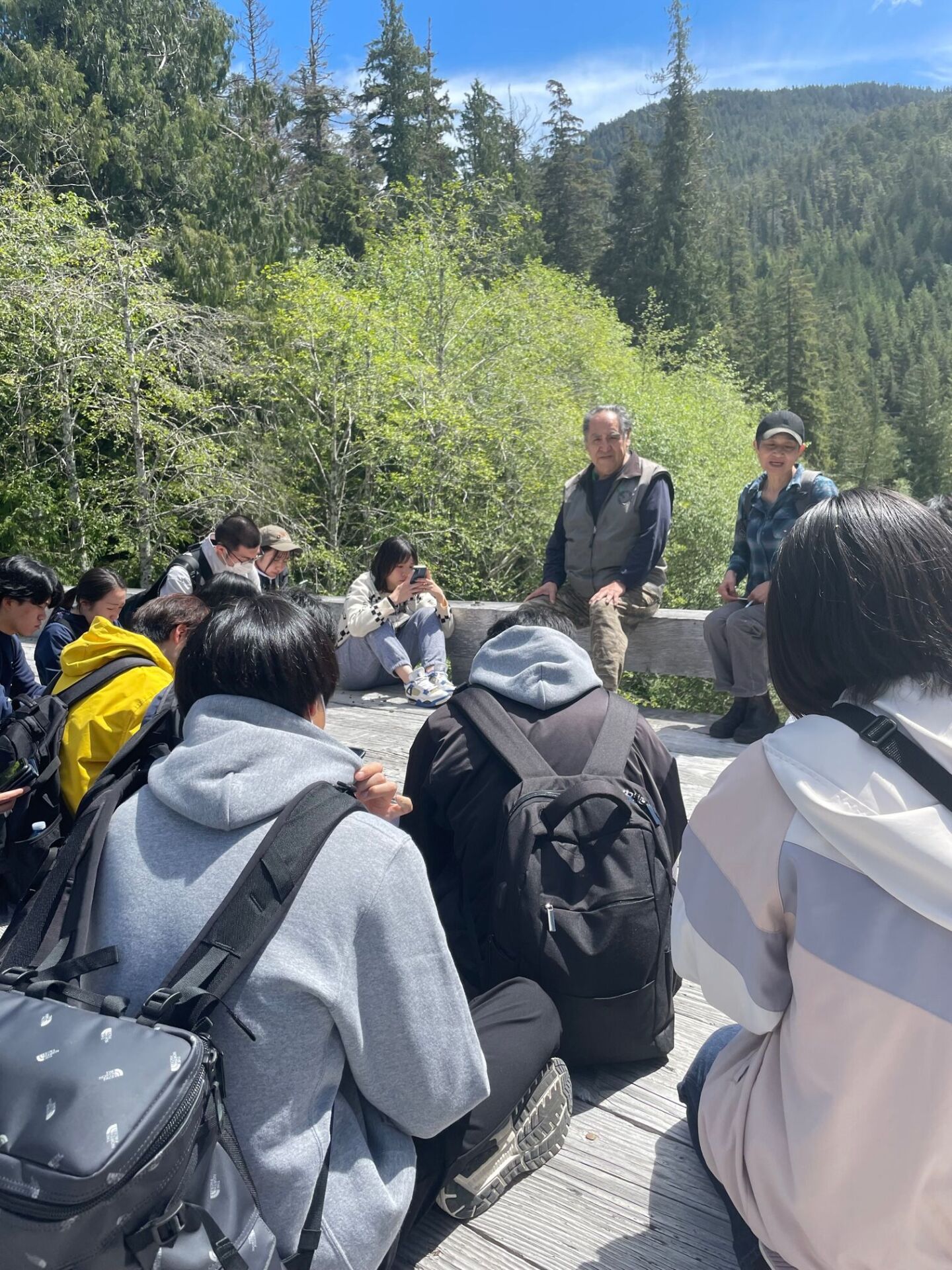
Moy Sutherland Sr. discusses his past work identifying culturally modified trees
As they sat in the sun, Moy showed Tamagawa some culturally modified trees and explained his role in identifying them to the loggers working on First Nations land. As he passed around some cedar strips and yew carvings, Moy explained how vital these trees are for Nuu-chah-nulth ways of life. The students applied the knowledge they had gathered from the previous few days to ask intelligent questions and Moy had no shortage of stories to tell!
A couple students tried snacking on some spruce, which, despite their smiles, they agreed was much too lemon-y for their liking!
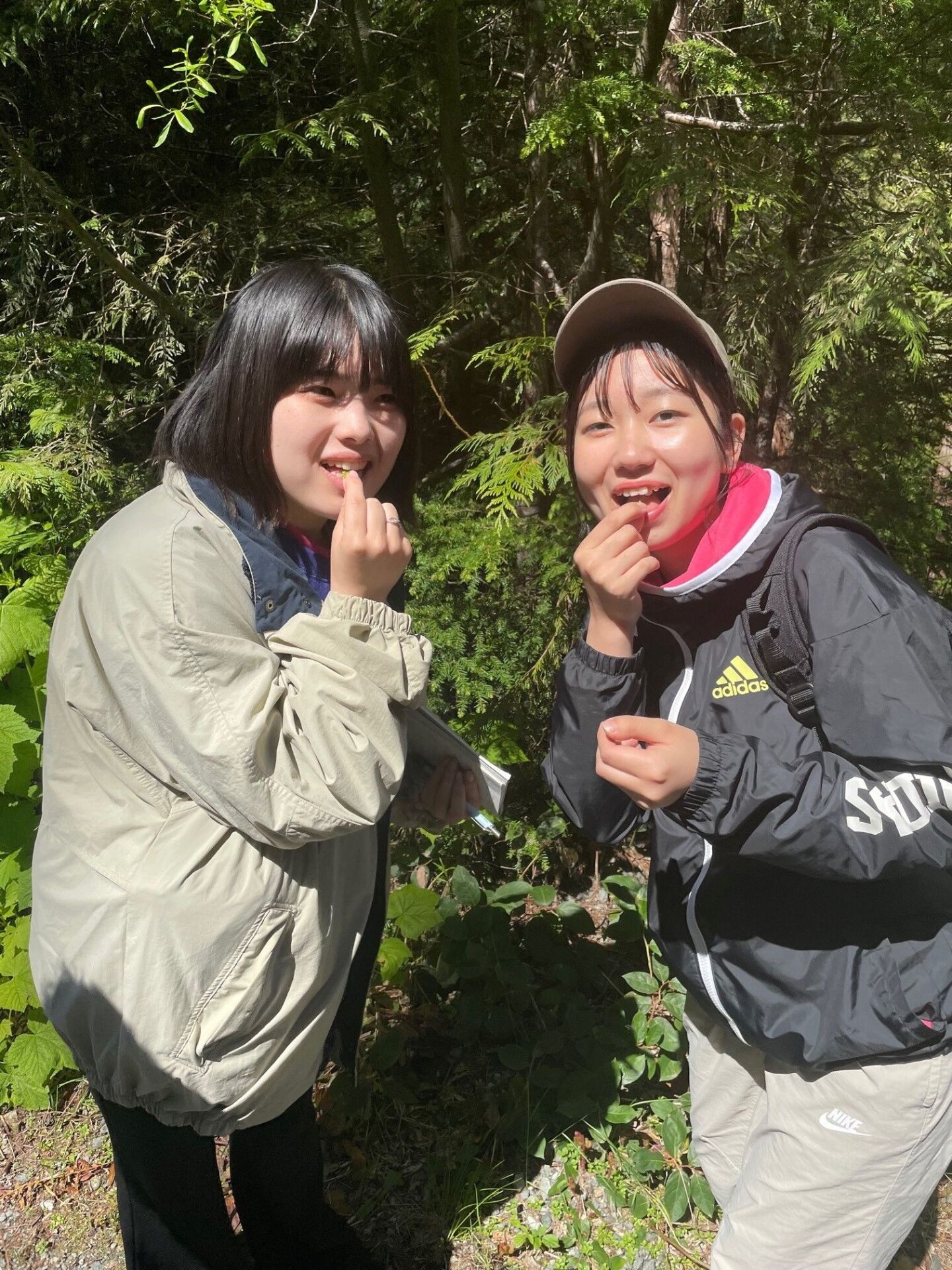
Students snacking on spruce at Sutton Pass
While expressing his excitement at getting to deliver his talks to a school group again, Moy stated his main philosophy is that one is never too old to learn and never too young to teach. This proved to be true as the students taught Moy how to say "thank you" in Japanese, and he taught them in Nuu-chah-nulth language.
Hosting Tamagawa made West Coast NEST so glad to once again be able to connect visitors with local organizations and individuals to promote place-based learning and we are already looking forward to hosting the next group of Tamagawa students in the fall!
Thank you Raincoast Education Society, Clayoquot Biosphere Trust, ReddFish Restoration Society, and Moy Sutherland Sr. for sharing knowledge through place-based education.

